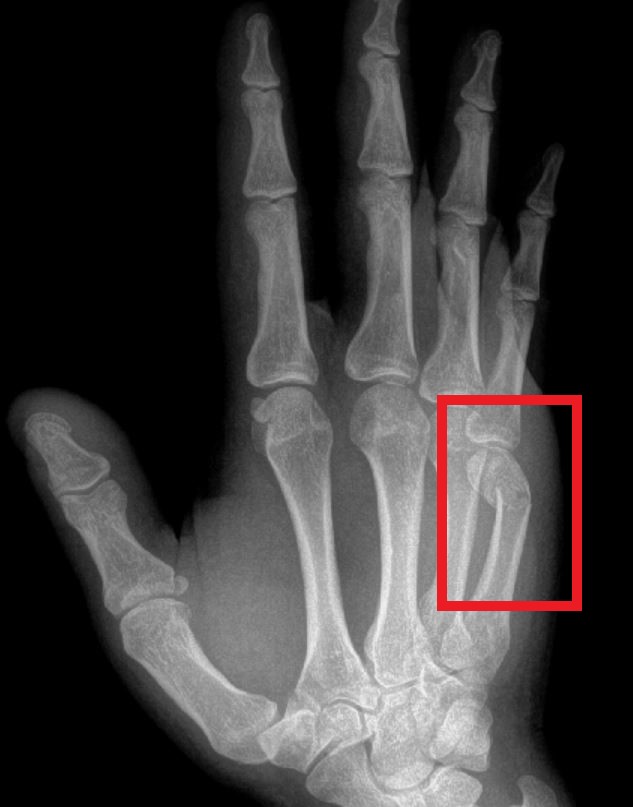Boxers fracture is a very common hand injury. The typical cause is punching a wall with a clenched fist. These injuries are most common in young adult males. They can also occur from a variety of ways such as a fall, sports injury, or car accident. A “boxer’s fracture” is defined as a fracture of the 5th metacarpal neck. “Fracture” is simply the medical term for “broken bone.”
There are five metacarpals — one for each finger and the thumb. The 5th metacarpal is at the base of the pinkie. Bruising, swelling, pain, and finger stiffness are common symptoms at first. The knuckle may look abnormal or out of place as well.
The recommended treatment of this injury depends on the alignment of the fracture as noted on the x-rays and the patient’s medical condition and activity level. Most patients have boxer’s fractures which have mild to moderate angulation and, therefore, do not require surgery. Angulation is measured in degrees and this defines how “crooked” the bone is.
Mild to moderate angulation in a boxer’s fracture typically results in a good long term outcome. Our hands can naturally compensate for this deformity and still function very well due to the motion at the base of the 5th metacarpal. The joint at the base of the 5th metacarpal is called the carpometacarpal (5th CMC) joint and has a high degree of mobility. Treatment in these cases is typically rest and protection in a splint or cast for 4-6 weeks. Ice, compression, elevation and oral NSAIDs are helpful to reduce hand swelling. Follow-up x-rays are obtained in clinic to evaluate how the fracture is healing, and therapy is often helpful to improve finger range of motion and hand strength.
A firm “bump” is often noticed at the fracture site during healing. This is composed of new bone formation, the body’s normal response to heal the fractured bone. This can be seen on x-ray and is called the “fracture callus.”
If the fracture angulation is excessive, or the metacarpal alignment is poor, the bone can be re-aligned with manipulation. This procedure is called a “closed reduction” and is performed in the office with local anesthesia numbing medicine. These patients can be treated without surgery and achieve a good result.
Occasionally, surgery is recommended to fix the fracture with pins or a plate and screws. This is most beneficial when there is significant angulation or if the finger is mal-rotated (twisted). Surgery has the potential complications of infection, stiffness, and scar tissue formation.
Your doctor will explain the options to you and recommend individual treatment based on your injury.

